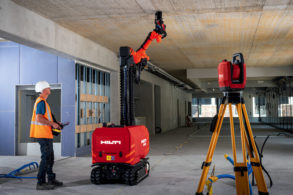Garnering billions of dollars of fresh investment, the construction industry is awash in new risk management, project management, and safety software solutions. Most of this technology has been focused on inspection, reporting, education, communications, and the like – all the “behavioral” aspects of promoting safety on jobsites. But while the industry has made significant progress on reducing its injury rates, dropping from from 3.7 per 100 full-time workers in 2012 to 1.6 in 2022, a recent report from the US Bureau of Labor Statistics reveals that the rate of fatalities on job sites in 2022 is as high as it has been in the past decade.
Last month, the BLS released its annual report on Fatal Occupational Injuries, and the construction sector clocked a fatality rate of 9.6 per 100,000 full-time workers. That compares to a fatality rate of 9.5 in 2012. With this apparent lack of progress in driving down the rates of deaths on construction sites, it seems appropriate to ask the question of whether it is time for the industry to add a new focus to its safety efforts, and, if so, what the industry should be focusing on, now.
The Limitations of The Industry’s Focus on Education and Compliance
Much of safety management’s approach over the past decades has been built on the twin ideas that reducing all injuries will lead to reduced fatalities and that the principal way to reduce injuries is through increased training, personal protection, inspection, and compliance – all of which depends on individual worker behavior. Construction technologists have largely fallen in line with this thinking, developing an ever widening array of safety applications designed to digitize associated forms, provide and track more training in more mediums, and give management better capabilities to predict risks and spot risks through analytics and dashboards informed by the increasing amount of data available. While all of this investment has undoubtedly saved lives, the stark data about the industry’s stubborn fatality rate suggests that something more and different may be needed in order to break the pattern and actually drive a consistent and significant decline in the industry’s fatality rate, similar to what we have witnessed in the recordable injury rate.
Advanced Construction Machinery: The Potential To Move From The Focus On Worker Behavior to A Focus On Removing Workers From Hazardous Environments
Despite all our focus on training, inspection, compliance, and even pre-project planning and analytics, people continue to fall from heights, get trapped in cave-ins, and get struck by vehicles and other moving equipment – causes OSHA dubs “The Fatal Four.”

Even in this bulletin, the focus is around training and compliance, requiring specific behaviors by individual workers. So, for example, when people are working at heights, they are required to wear fall protection. They need to be trained on fall protection, and companies need to make sure that their people are wearing fall protection. Much of the technology is focused on helping companies train and enforce safety standards.

What if, instead, the industry were to put more focus on developing technology that allows workers not to have to work at elevated heights, in the first place? Drones can now perform an array of tasks at height that previously were performed by people, and, increasingly, there is other equipment that can be sent into elevated areas to perform tasks. Additionally, there is machinery that can be operated remotely by people standing on the ground that can perform tasks at height.
The past decade has witnessed a significant expansion of pilot test cases for robotics and remotely operated equipment in places that currently put workers into hazardous conditions. Beyond the development of robotics and other machinery that can perform tasks at heights, there are also more machines designed to work in confined spaces such as trenches or around masonry walls or other structures that may be vulnerable to collapse.

It is even now possible to operate tower cranes from the ground or other equipment that could be vulnerable to tipping over or otherwise causing fatal injuries.
To be sure, all of these products require additional development, and also regulatory and labor considerations that must be taken into consideration. Developing and deploying more advanced machinery at scale will require new training and new positions for technical and sales staff. The companies that make, rent, and sell the equipment will have to go through very significant changes. However, if the industry is ever to move past its record of tens of thousands of deaths worldwide each year, it may need to make the investment.




Discussion
Be the first to leave a comment.
You must be a member of the BuiltWorlds community to join the discussion.